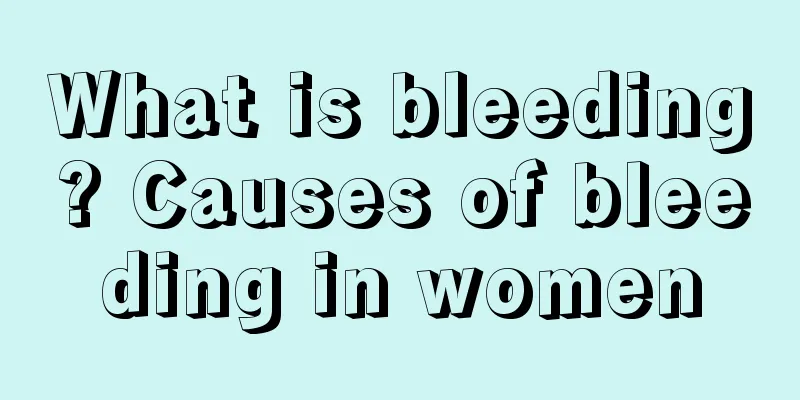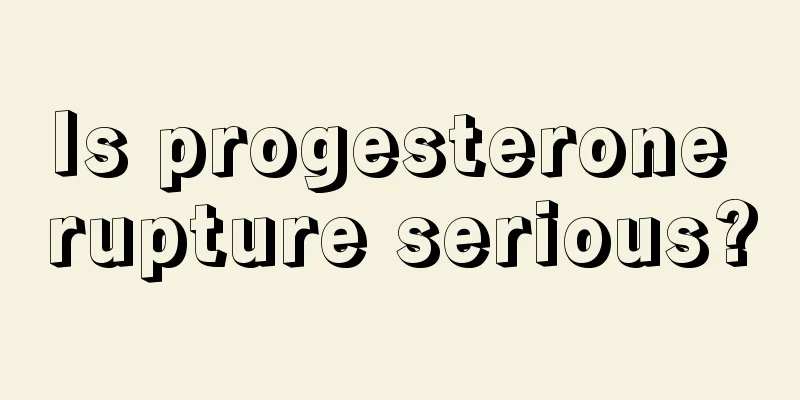How long does it take to have a uterine curettage without bleeding?

|
When an unexpected pregnancy occurs, the most intuitive thought of women is to have a uterine curettage, which will affect their physical health. After all, although the uterine curettage is a very small operation, it will still cause more or less harm to the female body after the operation. For example, vaginal bleeding will continue to occur. At this time, you must always keep clean and hygienic to prevent any complications. Curettage and dilation is a procedure to scrape out the endometrium or uterine cavity contents. This is a minor surgery commonly performed in obstetrics and gynecology and is one of the methods of artificial abortion. It is divided into two categories: diagnostic curettage (abbreviated as DCT) and therapeutic curettage. There are certain risks and complications. ① Diagnostic curettage is divided into general diagnostic curettage and segmented diagnostic curettage. General diagnostic curettage is suitable for endocrine abnormalities, which require understanding of endometrial changes and responses to sex hormones, the presence or absence of ovulation, the presence or absence of tuberculosis, etc. Segmented diagnostic curettage refers to the operation of first scraping the cervical canal and then the uterine cavity. The scrapings are sent for pathological examination separately. It is suitable for diagnosing cervical cancer, endometrial cancer and other uterine malignancies, and can understand the scope of cancer. ②Therapeutic curettage can be divided into suction curettage and forceps curettage. Suction curettage is the use of a negative pressure suction tube to suck out the contents of the uterine cavity, while forceps curettage is the use of an oval forceps to remove the contents of the uterine cavity, followed by curettage. The indications for therapeutic curettage include: those who want to terminate the pregnancy in early pregnancy, suction curettage within 3 months of pregnancy, forceps curettage to remove residual materials in the uterine cavity after 3 months and after induced abortion; those who need to empty the uterine cavity for incomplete abortion, inevitable abortion, missed abortion, retained placenta, hydatidiform mole, etc. Contraindications include acute genital tract and pelvic inflammation, trichomoniasis and candidal vaginitis, and patients with severe medical diseases who cannot tolerate surgery. Note: Understand the indications and choose the appropriate time and procedure for different diseases. The doctor must be skilled in the technique to avoid various unnecessary complications, such as uterine perforation, heavy bleeding, incomplete curettage, postoperative uterine adhesions, infection, etc. Due to trauma to the endometrium after curettage, there will be vaginal bleeding within two weeks after the operation. Generally, the amount of blood is less than or similar to the menstrual amount, which is normal. If the bleeding has not stopped for more than two weeks or the amount of blood exceeds the menstrual volume, please go to the hospital immediately. |
<<: Girls feel a foreign body sensation under their armpits
Recommend
Why are women's fingers yellow?
The yellowing of the hands is related to many fac...
How to treat watery leucorrhea?
Whether the leucorrhea is normal should be judged...
Does it hurt for women to have a curettage?
If a woman does not plan to have children, she mu...
Where is the best place to apply moxibustion during menopause
Women will experience many menopausal symptoms du...
What is the reason for fluid accumulation in the uterine cavity after abortion?
Abortion is a relatively common surgical procedur...
What should I do if my cervical erosion becomes cauliflower-like?
There are many causes of cervical erosion. For ex...
Can I have sex with uterine fibroids?
For women with uterine fibroids, all they need to...
World COPD Day: Lung function test is the gold standard for diagnosing COPD
November 18, 2020 is the 19th World COPD Day. Thi...
Can pelvic repair reduce vaginal size?
Regardless of the method of delivery chosen, the ...
Drink more hot water? Drinking water correctly is a technical job
"Drink more hot water" is a simple and ...
Can I have a massage when I am seven months pregnant?
Once you are pregnant, you need to pay special at...
What foods contain progesterone?
If a woman has low progesterone after pregnancy, ...
Reference table of normal progesterone values in non-pregnant women
Progesterone value is a physiological phenomenon ...
What to do if you have chest pain while taking birth control pills
Women often experience some adverse symptoms when...









